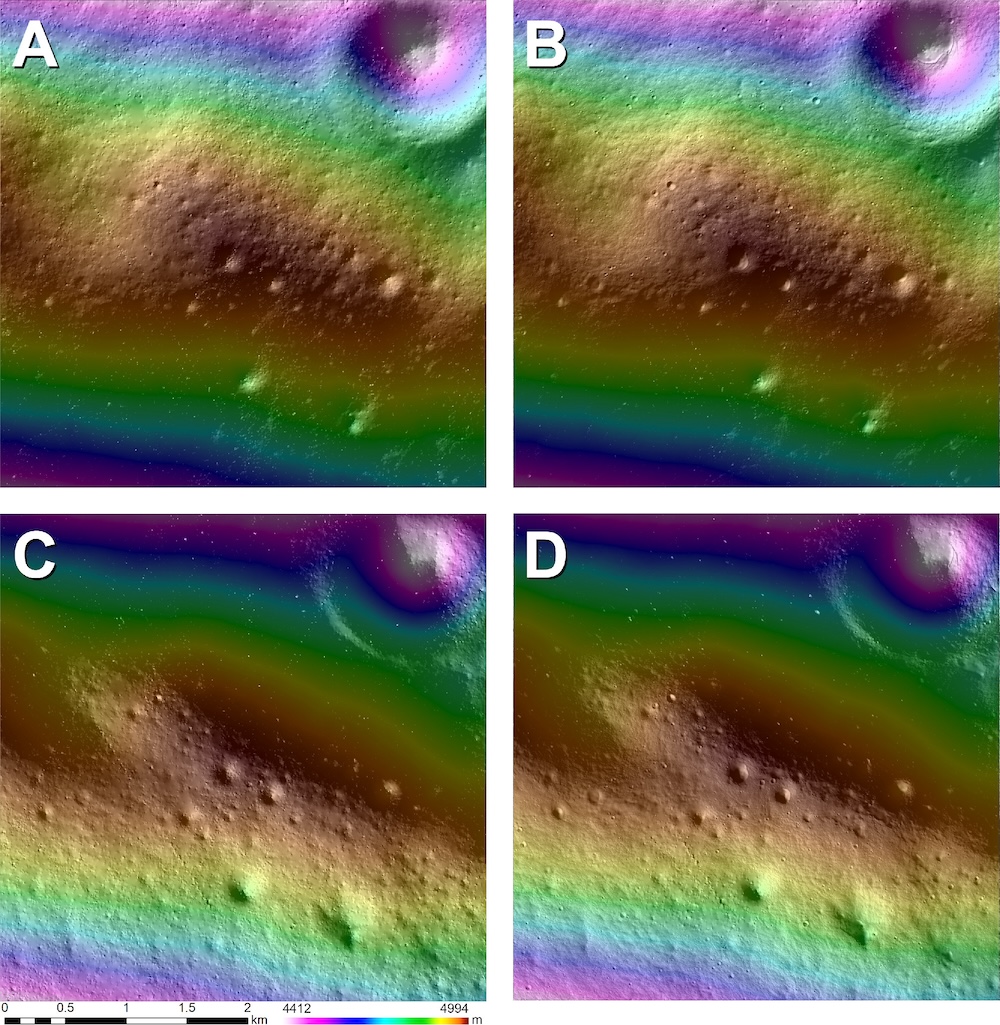There was a time when maps of the Moon were created from telescopic observations and drawings. Indeed Sir Patrick Moore created maps of the Moon that were used during the historic Apollo landings. Now researchers have enhanced a technique to create accurate maps from existing satellite images. Their approach uses a technique called ‘shape-from-shading’ and involves analyzing shadows to estimate the features and shape of the terrain. Future lunar missions will be able to use the maps to identify hazards on the surface making them far safer.
Researchers at the Brown University in Rhode Island have helped refine a process used to map the surface of the Moon making it more accurate than ever before. In their paper, published in the Planetary Science Journal and authored by Benjamin Boatwright and team details the enhancements to the mapping technique. It can generate detailed models of the Moon’s surface to highlight craters, ridges and slopes from composites of 2D images.

Highly detailed maps are of crucial importance to lunar missions and help the planners to identify the safest place to land. They can also use them to identify areas of particular interest that require further study enabling the whole mission to be far more efficient. Missions such as the Artemis project will benefit when it heads for the south pole of the Moon, an area which is not well mapped. High resolution maps of the area will aid the autonomous landing systems to avoid hazards.

Creating the maps is a time consuming job and is difficult to be accurate when lighting levels on target area are poor. The interpretation of shadows has been less than effective until now with the team addressing the issues. In their paper, the team explain how advanced computer algorithms can automate a lot of the process and improve the resolution of the generated models. Their new software gives lunar astronomers the necessary tools and information to create larger more detailed maps of the surface.
To allow lunar scientists to create a map from images requires at least two images of the same area. Each image must be perfectly aligned with its counterpart so that features in one are in exactly the same place in the other. Until now, the technology has not been able to take multiple images of an area and create a perfect map. Boatwright said ‘We implemented an image alignment algorithm where it picks out features in one image and tries to find those same features in the other and then line them up, so that you’re not having to sit there manually tracing interest points across multiple images, which takes a lot of hours and brain power.’
Along with the image alignment algorithm, the researchers created quality control algorithms and filters to remove poor quality images from the alignment process. By only inputing good quality images to the process means the output will be of far higher quality. It is a similar model that astronomical imaging employs when processing multiple images through stacking and alignment techniques.
To evaluate the accuracy of their work, the team compared the output from existing maps of the Moon to look for errors. To their delight, they found that maps created using their enhanced ‘shape-from-shading’ technique was more precise compared to those acquired during traditional techniques.
Source : New technique from Brown University researchers offers more precise maps of the Moon’s surface

